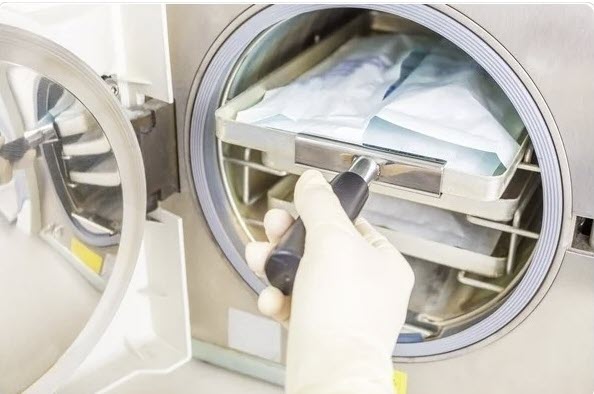Fluorinated ethylene propylene, commonly known as FEP, is a versatile material widely used in various industries due to its unique properties. This article will explore the world of FEP tubing and its applications in fluoropolymer technology. Whether you are a scientist, engineer, or simply curious about this fascinating material, read on to discover the wonders of FEP.

What is FEP?
FEP is a type of fluoropolymer with excellent chemical resistance and high thermal stability. It is derived from tetrafluoroethylene (TFE) monomers through copolymerization with hexafluoropropylene (HFP). This combination results in a material with remarkable characteristics that make it suitable for various applications.
Key Properties of FEP
- Chemical Resistance: One of the most significant advantages of FEP is its exceptional chemical resistance. It can withstand exposure to corrosive chemicals such as strong acids, bases, solvents, and even oxidizing agents without undergoing degradation or damage.
- Thermal Stability: With an operating temperature range from -200°C to +200°C (-328°F to +392°F), FEP exhibits impressive thermal stability. It can withstand extreme temperatures without losing its mechanical integrity or physical properties.
- Non-Stick Surface: Similar to other fluoropolymers like PTFE (polytetrafluoroethylene), FEP has a non-stick surface that prevents substances from adhering to it. This property makes it easy to clean and ideal for applications requiring low friction or release properties.
- Dielectric Strength: FEP is widely used as insulation material for electrical cables and wiring due to its excellent dielectric strength and low dissipation factor. It provides reliable electrical insulation even in high-voltage applications.
- Transparency: FEP is transparent, allowing easy visual monitoring of the flow or content inside tubing or containers made from this material. This transparency is beneficial in industries such as pharmaceuticals and food processing.
Applications of FEP Tubing
FEP tubing finds extensive use in various industries and applications due to its unique combination of properties. Let’s explore some of the critical areas where FEP tubing excels:
1. Chemical Processing
FEP tubing is employed in chemical processing plants for safely and efficiently transferring corrosive chemicals. Its exceptional chemical resistance ensures that the tubing remains unaffected by aggressive substances, thereby preventing leaks or contamination during transportation.
2. Pharmaceutical Industry
The pharmaceutical industry relies on FEP tubing for various critical applications, including fluid transfer, filling equipment, and bioprocessing systems. The transparency of FEP allows operators to visually inspect the flow without compromising sterility.
3. Food and Beverage Sector
FEP tubing is vital in ensuring food safety by providing an ideal transportation medium for beverages, dairy products, sauces, and other food items requiring hygienic handling. Its non-stick surface makes it easy to clean after use.
4. Aerospace Engineering
FEP tubing finds use in fuel lines in aerospace engineering due to its excellent resistance to aviation fuels and hydraulic fluids. The material’s thermal stability enables it to withstand extreme temperature variations commonly encountered during flight operations.
5. Laboratory Equipment
Laboratories often utilize FEP tubing for various purposes, such as chromatography systems, sample transfer lines, and analytical instruments where chemical compatibility is crucial.
FEP tubing is a remarkable material that finds widespread application across multiple industries due to its exceptional properties, such as chemical resistance, thermal stability, non-stick surface, dielectric strength, and transparency. This fluoropolymer’s versatility makes it invaluable in countless scenarios where reliability and performance are paramount, from chemical processing plants to laboratories and aerospace engineering projects. As technology advances further and new applications emerge on the horizon, we can expect FEP’s popularity to continue growing.
Frequently Asked Questions (FAQs)
Q1: Is there any difference between FEP and PTFE?
A1: Yes, there are differences between these two fluoropolymers despite their similar characteristics. While FEP has a lower maximum operating temperature than PTFE, it offers better clarity and flexibility.
Q2: Can FEP tubing be sterilized?
A2: Yes, FEP tubing is compatible with various sterilization methods, including autoclaving, gamma irradiation, and ethylene oxide gas sterilization.
Q3: What are the benefits of using FEP tubing in the semiconductor industry?
A3: FEP tubing’s high purity and low extractables make it an ideal choice for critical semiconductor manufacturing processes where contamination can significantly impact product performance.
Q4: How does FEP compare to other fluoropolymers like ETFE or PFA?
A4: While all three materials share some similarities, they have different properties that make them suitable for specific applications. PTFE has excellent mechanical strength and is often used in architectural applications. On the other hand, PFA provides superior chemical resistance compared to both FEP and PTFE.
Q5: Can I use FEP tubing in high-pressure applications?
A5: Although FEP has good burst pressure characteristics, it is not recommended for continuous use under high-pressure conditions. Materials like PFA or stainless steel may be more appropriate for such applications.
